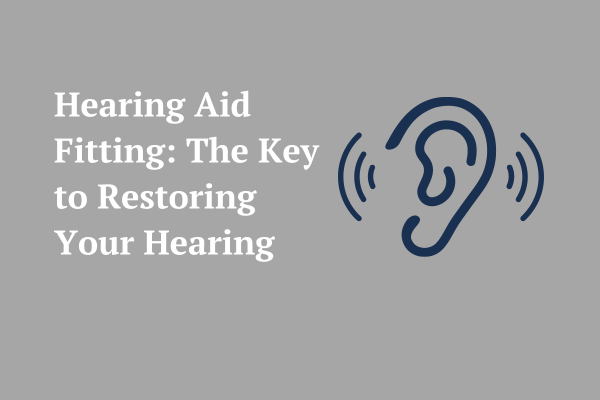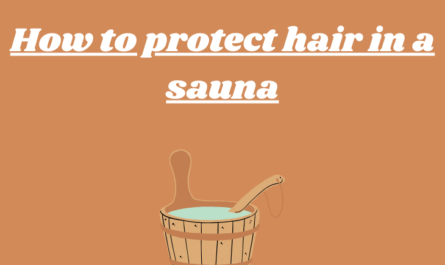Introduction: Hearing Aid Fitting
Hearing loss is a common condition that affects millions of people worldwide. It can have a significant impact on an individual’s quality of life, leading to communication difficulties, social isolation, and decreased overall well-being. However, with advancements in technology, hearing aids have become a lifeline for those with hearing impairments. The effectiveness of a hearing aid greatly depends on its fitting process, as each individual has unique hearing needs. In this comprehensive guide, we will explore the ins and outs of hearing aid fitting, its importance, and how it can significantly improve your auditory experience.
What is Hearing Aid Fitting?
Hearing aid fitting refers to the personalized process of selecting, adjusting, and verifying the settings of a hearing aid to meet the specific requirements of an individual. This process is carried out by a qualified audiologist or hearing instrument specialist who carefully considers factors such as the severity and type of hearing loss, lifestyle, and individual preferences.
The Importance of Proper Hearing Aid Fitting
1. Optimising Hearing Aid Performance
Proper fitting ensures that the hearing aid is programmed accurately to match an individual’s hearing loss. Through fine-tuning, an audiologist can adjust various parameters such as volume, frequency response, and noise reduction to optimise the device’s performance. This personalised approach ensures that the hearing aid provides the best possible sound quality for the wearer.
2. Enhanced Speech Understanding
One of the primary goals of hearing aid fitting is to improve speech understanding in different listening environments. By tailoring the settings of the device to an individual’s specific needs, background noise can be reduced, and speech sounds can be amplified, making conversations clearer and more intelligible. This can greatly enhance communication and overall social interactions.
3. Comfortable Listening Experience
Improperly fitted hearing aids can cause discomfort and irritation, leading to a reluctance to wear them. A well-fitted hearing aid ensures a comfortable fit, eliminating any physical discomfort such as soreness, pressure, or itching. This promotes consistent usage, enabling individuals to enjoy a seamless and comfortable listening experience.
4. Long-term Adaptation
Adjusting to wearing a hearing aid can be a gradual process, and proper fitting plays a vital role in ensuring a smooth transition. By gradually introducing the amplification and acclimatising the wearer to new sounds, the fitting process allows the brain to adapt to the amplified signals, maximising the benefits of wearing a hearing aid.
5. Preventing Feedback and Whistling
Feedback and whistling sounds, often referred to as “feedback,” can occur when sound leaks from the ear canal back into the microphone of the hearing aid. A well-fitted hearing aid can effectively prevent feedback by ensuring a proper seal in the ear canal and minimizing the chances of sound leakage.
The Hearing Aid Fitting Process
The hearing aid fitting process involves several essential steps to ensure optimal customization and satisfaction. Let’s delve into each step in detail:
1. Comprehensive Hearing Evaluation
Before the fitting process begins, a comprehensive hearing evaluation is conducted. This evaluation typically includes pure-tone audiometry, speech audiometry, and other specialised tests to determine the nature and extent of the individual’s hearing loss. The results of these tests guide the selection and customisation of the appropriate hearing aid.
2. Selection of the Right Hearing Aid
Based on the individual’s hearing evaluation results, the audiologist or hearing instrument specialist assists in selecting the most suitable hearing aid model. There are various types of hearing aids available, including behind-the-ear (BTE), in-the-ear (ITE), and completely-in-the-canal (CIC) options. Factors such as the degree of hearing loss, cosmetic preferences, and lifestyle requirements are taken into account during this selection process.
3. Customisation and Programming
Once the hearing aid model is chosen, the device is customised and programmed to meet the wearer’s specific needs. The audiologist adjusts the settings of the hearing aid using specialized software, taking into consideration the individual’s audiogram, speech understanding, and personal preferences. These adjustments ensure that the hearing aid provides optimal amplification for different listening situations.
4. Verification and Real-Ear Measurement
To ensure the accuracy of the programming, verification and real-ear measurement techniques are employed. Verification involves using a coupler or a miniature microphone system to assess the output of the hearing aid. Real-ear measurement, on the other hand, involves placing a tiny microphone inside the ear canal to measure the actual sound delivered by the hearing aid. These measurements help the audiologist fine-tune the device for optimal performance.
5. Counselling and Education
The fitting process is not solely focused on the technical aspects of the hearing aid. Counseling and education are integral components to help individuals adjust to their new device. The audiologist provides guidance on the proper usage, care, and maintenance of the hearing aid. Additionally, they address realistic expectations and discuss strategies to overcome communication challenges in different environments.
6. Follow-Up Care and Fine-Tuning
Following the initial fitting, regular follow-up appointments are essential to monitor the wearer’s progress and make any necessary adjustments. These appointments provide an opportunity to fine-tune the hearing aid settings based on feedback from the wearer. The audiologist can address any concerns, make programming refinements, and ensure that the hearing aid continues to meet the wearer’s evolving needs.
Frequently Asked Questions (FAQs)
Q: How long does the hearing aid fitting process typically take
A: The hearing aid fitting process can vary in duration but generally takes around 1 to 2 hours. However, the follow-up appointments and adjustments may extend over several weeks or even months to ensure optimal outcomes.
Q: Are all hearing aids the same?
A: No, hearing aids come in various types, styles, and technologies. The selection of the right hearing aid depends on an individual’s specific hearing loss, preferences, and lifestyle requirements.
Q: Will I instantly have perfect hearing with a hearing aid?
A: While hearing aids can significantly improve your ability to hear, it is essential to understand that they may not restore hearing to normal levels. It takes time and practice to adapt to the new sounds amplified by the hearing aid.
Q: How often should I have my hearing aid adjusted or reprogrammed?
A: Regular follow-up appointments with your audiologist are crucial to assess your progress and make any necessary adjustments. It is recommended to have your hearing aid re-evaluated and reprogrammed annually or as needed.
Q: Can I adjust the settings of my hearing aid on my own?
A: Most modern hearing aids come with user-friendly controls that allow wearers to make minor adjustments. However, it is important to consult with your audiologist before making any significant changes to the settings.
Q: What if my hearing aid doesn’t fit comfortably?
A: If your hearing aid is causing discomfort or irritation, it is crucial to consult with your audiologist. They can assess the fit, make necessary adjustments, or explore alternative options to ensure a comfortable wearing experience.
Conclusion
Hearing aid fitting is a crucial step in the journey to regain your hearing and improve your quality of life. By customizing and optimizing the settings of your hearing aid, you can experience enhanced speech understanding, reduced background noise, and overall improved communication. The expertise of a qualified audiologist or hearing instrument specialist is essential in guiding you through the fitting process and providing ongoing support. So, if you’re ready to embark on your hearing aid fitting journey, consult with a professional and take the first step towards restoring your hearing and reconnecting with the world around you.
Visit the link to read more: https://family-fitness-fun.com/fit-found-me-fitness-motivation-and-education/





